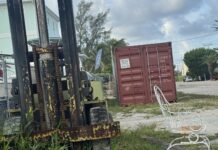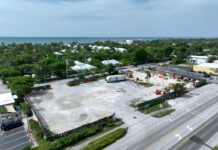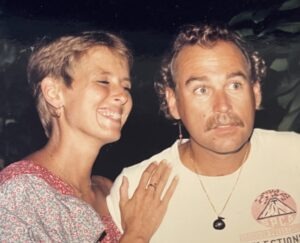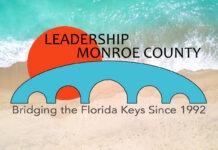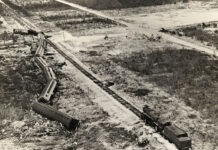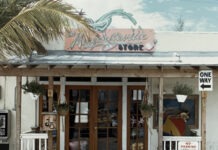I started a Facebook page the day before Christmas Eve and decided to call it Florida Keys History with Brad Bertelli. Fifteen years of study have revealed more history, stories and lore than even the most steadfast pirate could shake a bottle of rum at before falling over.
The idea was to share histories from up and down the Florida Keys and Monroe County. So many stories about the island chain tend to be absorbed by all things Key West.
Though the archipelago consists of something like 1,700 islands, it is often reduced to just the one and only Key West. There is good reason for the spotlight on the Southernmost City; it is the clear and present heart of the Florida Keys. Through the early decades of territorial history and even those of early statehood, Key West was the largest and most important community in the island chain.
The year 2022 is the year Key West is celebrating its bicentennial, 1822 being the year Perry first planted an American flag on the island. It was also the year Key West was declared a port of entry — one of only two established along the territory’s east coast. The other was St. Augustine.
The designation helped create the foundation on which the island’s spectacular course was set.
It also cemented its importance to the industry on which the back of Key West’s early success was built—wrecking.
By 1823, Key West had only just begun to develop as a thriving community. Less than a year after the island was declared a port of entry, on July 2, 1823, Monroe County was established as the Florida Territory’s sixth county. Named after the then sitting and fifth President of the United States, James Monroe, county boundaries originally extended north to the southern shore of Lake Okeechobee and west to the Gulf of Mexico. Because Key West was the largest community in the newly formed county, it was declared the county seat.
Two days after the county was established, the Legislative Council of the Territory of Florida, George Murray president, passed the 1823 Salvage Act. The act was the country’s inaugural attempt to bring a bit of order to what was considered a lawless industry. Section 1 of the act required wreckers to report their salvage claim to a justice of notary: “Concerning wreckers and wrecked property: WHEREAS it is necessary that prompt and efficient protection should be given to wreckers and to the owners of wrecked property brought within the limits and jurisdiction of this Territory: Be it enacted by the Governor and Legislative Council of the Territory of Florida, And it is hereby enacted by the authority of the same, that whenever wrecked property of any description whatsoever shall arrive, be brought in or landed in any part of this Territory, it shall be the duty of the salvor or salvors, owner or owners, or their representatives, or other persons having charge of the same, to make report of the fact of such arrival to such justice of the peace or notary public as may reside next adjacent to the place of arrival.”
Section 14 of the document addressed the idea of wreckers utilizing unprincipled tactics like the use of “false lights” to enhance their business opportunities. It read: “Be it further enacted, That if any person shall within this territory, make or hold out any false lights, or make any device, or do any other act or thing with intent to mislead, bewilder or decoy the mariners of any vessel on the high seas, whereby such vessel may be cast ashore, or get aground, such person or persons so offending, and every accessory thereto, shall on conviction thereof be deemed guilty of Felony, and shall suffer death.”
Tales of skullduggery and “false lights,” while pervasive in wrecker lore, have been rarely documented. However, considering the fact that these practices were addressed in a formal document, it had been deemed a problem worth addressing on the government level.
What flung the door open for Key West’s future financial successes was the 1825 Federal Wrecking Act that declared that all salvaged property claimed in territorial waters had to be taken to an American port of entry. For those involved in the salvage of cargo and wrecks along the Florida Reef, the only reasonably accessible port of entry was Key West. Because Key West became the center of the wrecking industry, Key West continued to grow in both size and importance. The island became home to not just the largest community in Florida but, by 1860, the richest city per capita in the growing United States.
Key West, however, is not the only island of historical importance in the Florida Keys.
The island chain is chock-full of histories, stories, and lore. With as many as 1,700 islands making up the archipelago, they may be endless, so I decided to create the Facebook page Florida Keys History with Brad Bertelli where, daily, some piece of the Florida Keys story is shared. If you are a fan of local history, you will be a fan of the page.




